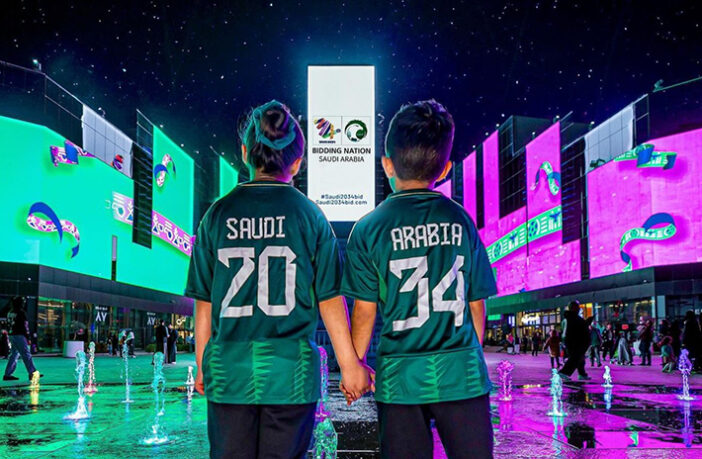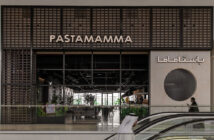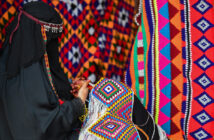CONTRIBUTOR: STEVEN ABRAHAM
From its ancient origins to its modern-day glory, football has woven itself into the very fabric of Saudi society, capturing the hearts of its people and forging an integral part of the nation’s identity. Affectionately dubbed “the beautiful game” by its fans, football reigns supreme as the world’s most beloved sport, boasting billions of followers worldwide, a significant portion is in Saudi Arabia. Serving as a powerful unifier and a common bond among people, football’s roots run deep, stretching back centuries from its humble beginnings with a ball crafted from animal hide to the global phenomenon it is today.
Throughout history, football has embodied teamwork, skill, and passion. Modern football consists of two opposing teams consisting of eleven players each, that meet on a field (called the pitch) of either grass or Astroturf. The objective of each team is to defend its “goal” (an eight meter by two-meter post with a net in-between), while advancing the football past their opponents into their opponent’s goal. Touching the football with your hands is prohibited by any member of the teams; only the goalkeeper is exempt from this rule. Thus, moving the football is done with the feet – hence the name of this sport. The duration of the match is a total of ninety minutes, separated into halves by a fifteen-minute pause in action called halftime. The team with the most goals at the end of the ninety minutes is the winner. In the event neither team has a greater number of goals after the ninety-minute regulation period, play will be extended by an additional thirty-minute period broken into two fifteen-minute halves. Finally, if even after such a grueling contest there still has not been a deciding goal scored, a penalty shootout phase begins whereby the athletes will take turns attacking their opponent’s goal until the tie is broken. These rules were established in 19th century England, honed and codified over the years to reflect modern day regulations administered by the International Association Football Federation or FIFA.
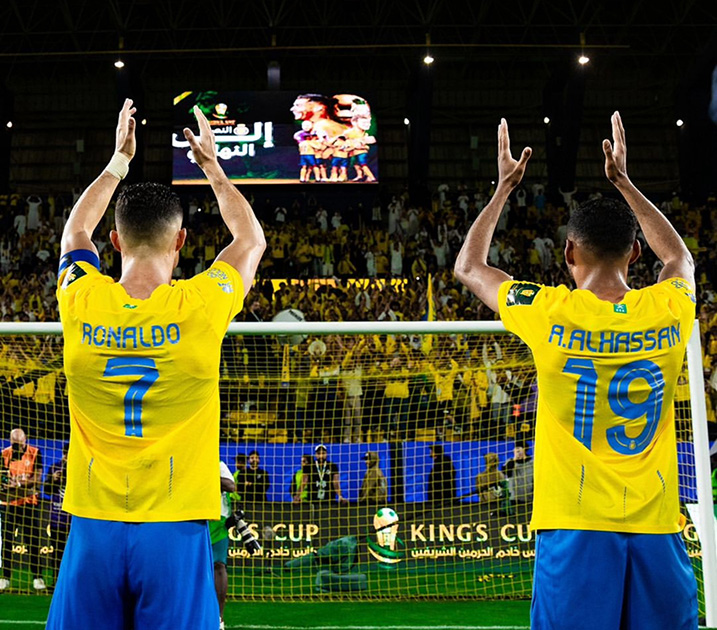
Football in Saudi Arabia
Football’s history in the Kingdom is no less dynamic, a game proverbially enjoyed by youth and adults alike. It has gone from being an informal pastime, to becoming a woven part of Saudi culture. Spearheaded by visionaries within the Saudi Royal Family, the foundation for the growth of football in the Kingdom started with the founding of the Saudi Arabian Football Federation (SAFF), which administers both club competitions and the Saudi National team known as Al Suquour Al Khodour (The Green Falcons). The Green Falcons are recognized as one of the most formidable teams in Asia. They have won multiple continental football championships, most notably the Asian Football Confederation Cup. His Royal Highness, the Crown Prince Mohammed Bin Salman famously addressed the team just before their opening match in the 2022 World Cup in Doha and told them “I know our group is difficult in the World Cup, and nobody expects us to secure a win or a draw. So, what I want to say is just be comfortable, play your game and enjoy the tournament.” Apparently, they took this advice to heart as they were the only team to defeat the eventual World Cup champions in Argentina in a nail-biting thriller that came down to the final minutes. The pride and fervor were so widespread that the Custodian of the Two Holy Mosques, King Salman declared a national holiday following their victory.
With clubs like Al Hilal, Al Nassr, Al Ahli, Al Shabab, and Al Ittihad generating the passion that fills stadiums to their capacity, the Saudi Pro League is responsible for driving the national pride we see on display both at home and abroad. Their online following alone commands millions of patrons. One cannot have a conversation about the Saudi professional football circuit without mentioning Al Hilal. A standout in the league, it is by far Saudi Arabia’s most storied franchise. Known colloquially as the Blue Waves, the team was founded in 1957 in Riyadh and its list of accolades is extensive. Since the Saudi Professional League was formed in 1971, Al Hilal has participated in every season. At the 2022 World Cup, nine of the eleven players on the national team’s roster represented Al Hilal.
Not to be outdone, Al Nassr, their cross-town rival, has a remarkable catalogue of its own. They have been nicknamed the Al Alami or the Global Ones, a reference fitting for a team that shot to international recognition with the signing of football great Cristiano Ronaldo, Al Nassr is no stranger to success. The owner of numerous national titles and international championships, the team represents the other half of Riyadh’s animated fanbase. When the two teams clash, it draws spectators from all over the Kingdom. Indeed, football fever is far from a novel phenomenon in this country. Passionate rivalries mark the landscape of the Saudi club leagues. One such contest is the decades-long matches between the Al Ittihad and Al Ahli football clubs. These teams first faced off in 1951 and in the years since the pendulum has swung back and forth resulting in the Jeddah Derby. A perennial event that became one of the most anticipated football matches in the region and the Asian continent until the leagues were restructured in 2022. Scores of fans filled the arena draped in their club shirts and flags and chanted, cheered, and sung their teams anthems with glee. Saudi fans are famously orderly with outburst rare even in defeat, still emotions run high and even Cristiano Ronaldo is not immune having exited the season with an ejection as dramatic as his arrival to Saudi football. One’s experience as a tourist in the Kingdom is no longer complete without experiencing a football match at one of the many stadiums in the country.
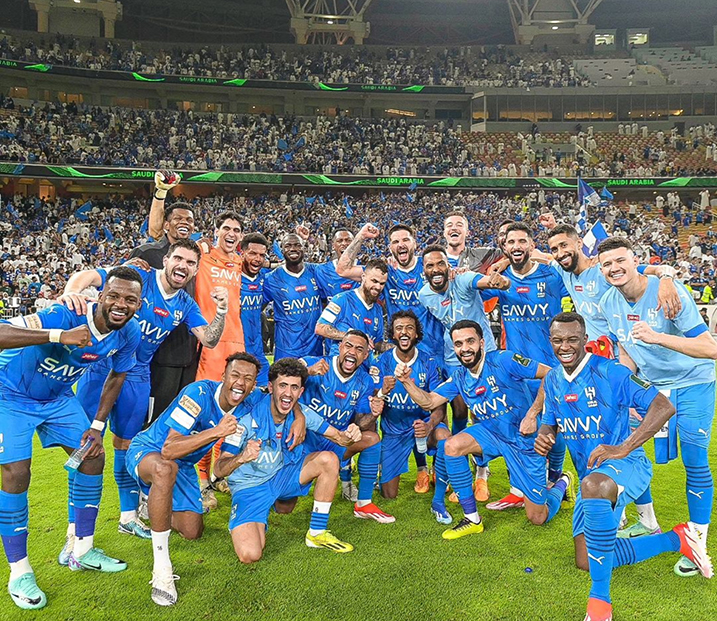
This culture has led to the development of football academies preparing the next generation of Saudi football players. The inauguration of the Mahd Sports Academy in Riyadh in July of 2020 demonstrates the Kingdom’s commitment to the development of homegrown talent. A sprawling campus of over 100,000 square meters, several indoor and outdoor football pitches, and hundreds of athletic trainers, this state-of-the-art facility is poised to transform the very nature of intramural sports within the Kingdom. The facility will be open to all Saudi children from the age of six with an eye towards recognizing and developing talent from a young age. With homegrown stars the likes of Salem Al Dawsari, Abdulrahman Ghareeb, and up and coming players like Feras Al Brikan just to name a few, one can only imagine a future where top talent is harnessed from such a young age.
The current state of play in the Kingdom is one of excitement and anticipation. With the successful recruitment of international superstars such as Cristiano Ronaldo and Neymar Junior, Saudi Arabia has emerged as a destination for top talent. Consistent with the theme of the government’s Vision 2030 initiative, which includes establishing Saudi Arabia as a global destination for sports, culture, and entertainment, football will be at the heart of some pivotal events. The spotlight will be back on the Green Falcons and the Kingdom of Saudi Arabia as they host the 2027 Asian Federation Cup and the 2034 World Cup for the first time – a capstone fitting for a quickly evolving sport in a rapidly transforming society.
Photo Credit: saff.com.sa
MILESTONES

- 1927: Founding of Al Ittihad Current Pro league champions Oldest club in Saudi Arabia
- 1955: Founding of Al Nassr; Recognized by FIFA as first Asian club to compete internationally
- 1956: Founding of the Saudi Arabia Football Federation (SAFF)
- 1957: Founding of Al Hilal; Most Saudi Professional League Titles (18)
- 1976: Inauguration of the Saudi Professional League
- 1984: Green Falcons defeated China at AFC Asian Cup
- 2007: Yasser Al Qahtani (Al Hilal) awarded Best Player of Asia
- 2022: In the opening round, the Green Falcons won against Argentina, the eventual World Cup Champions
- 2027: First ever host for Asian Federation Cup
- 2034: First ever host for the FIFA World Cup

